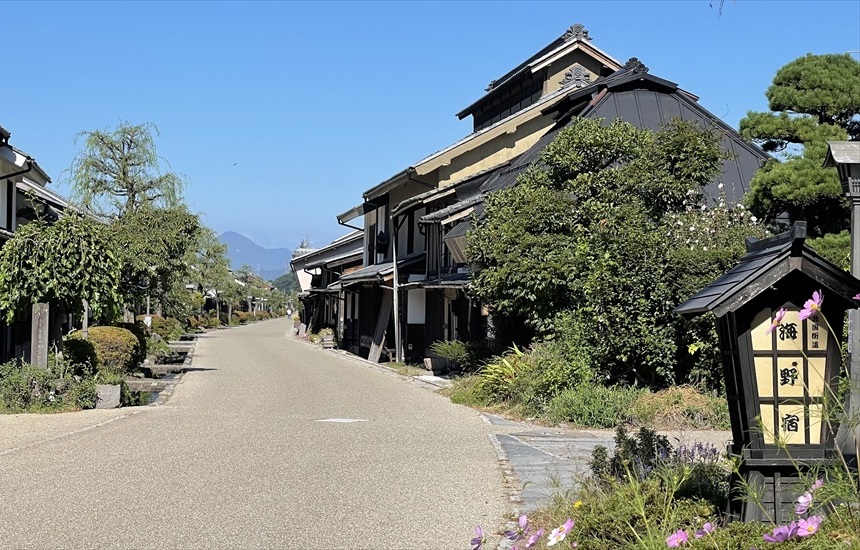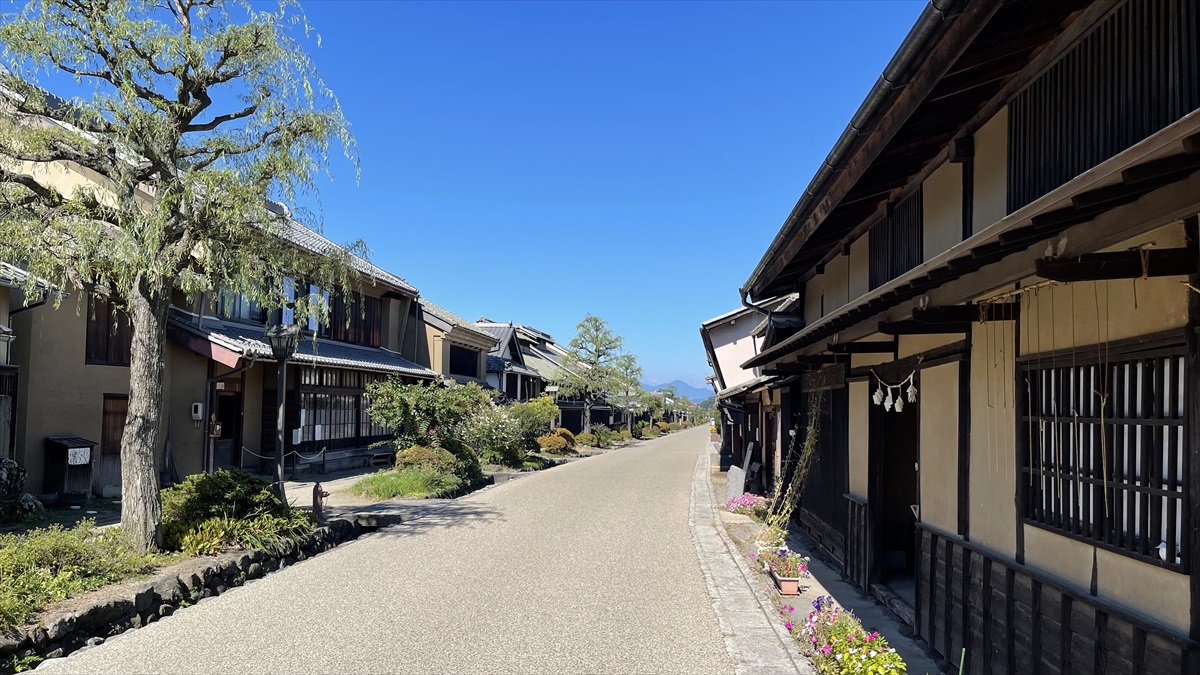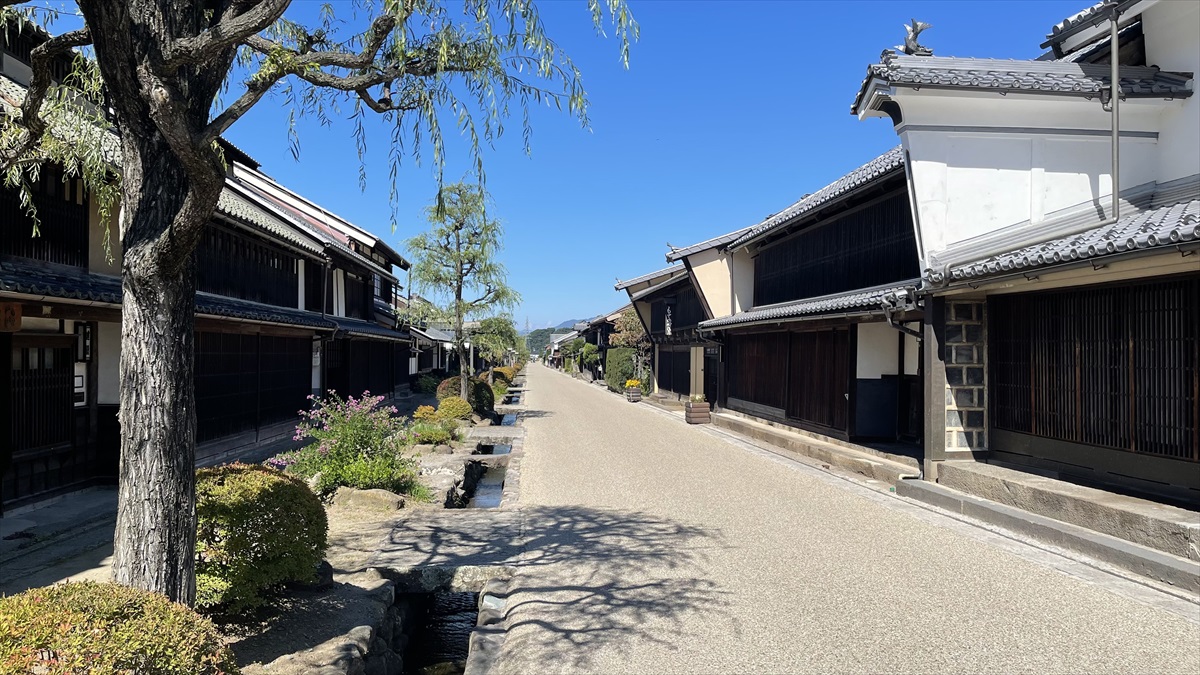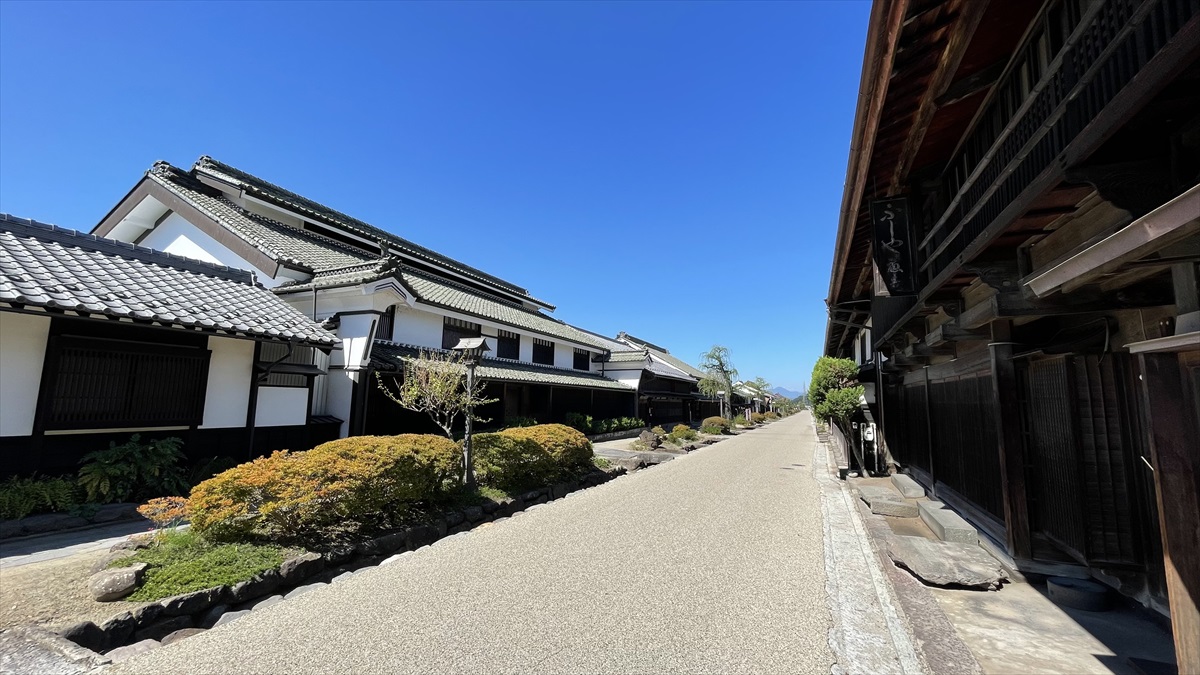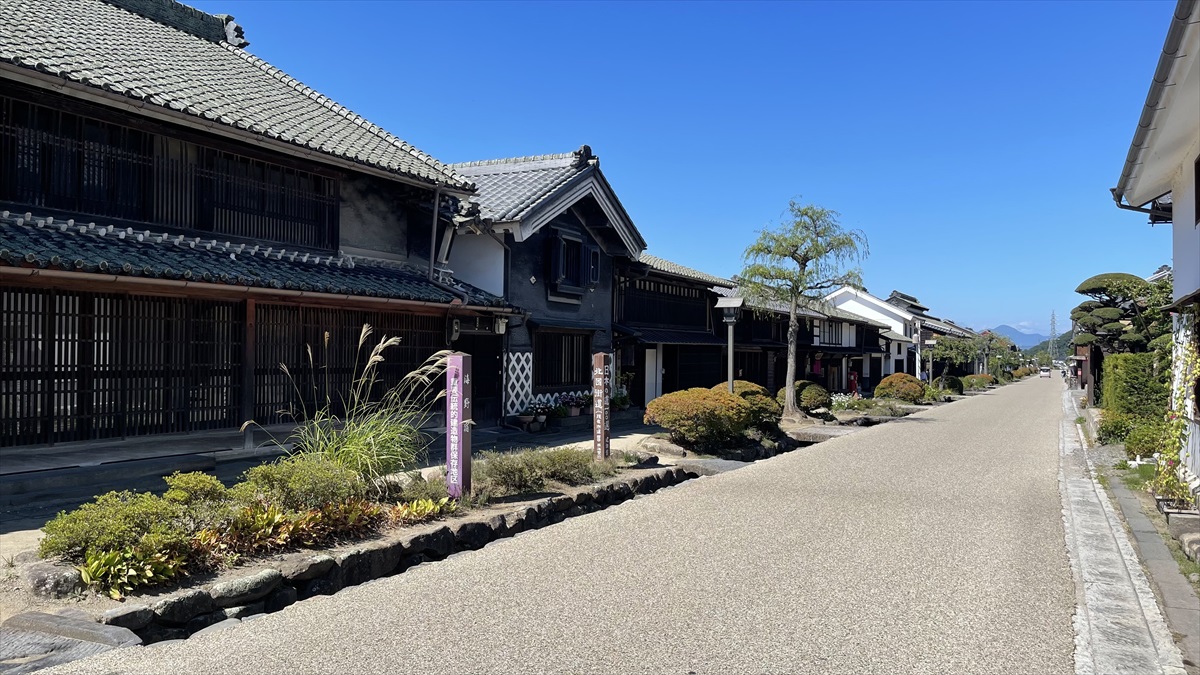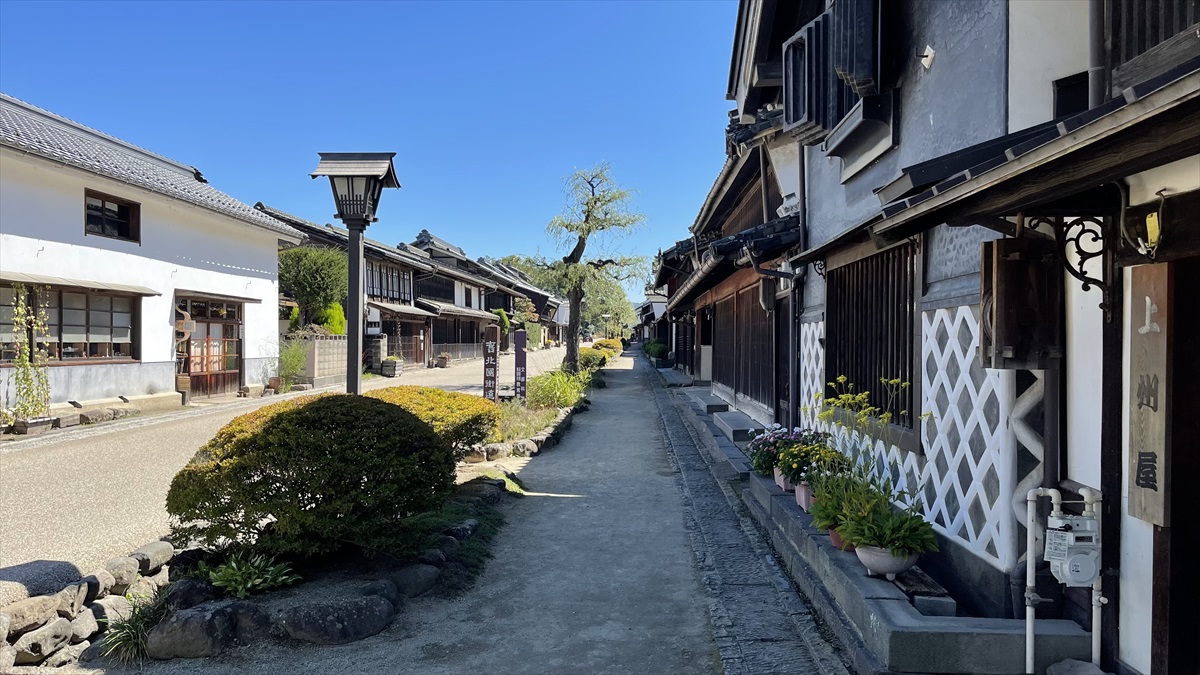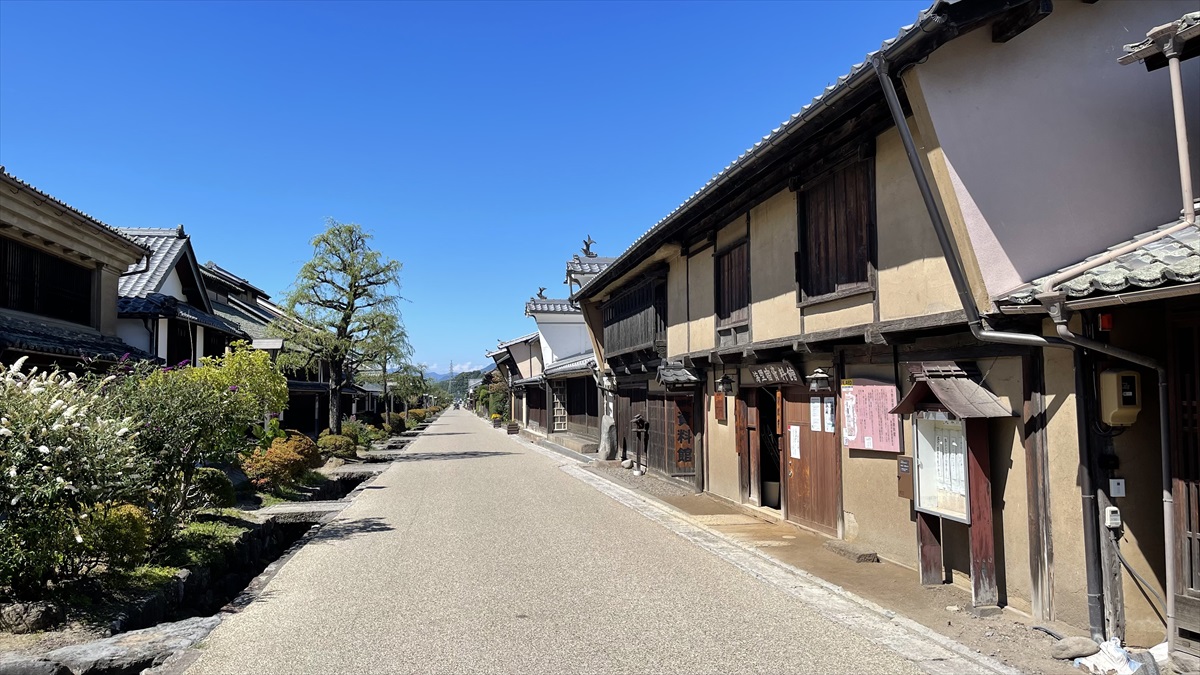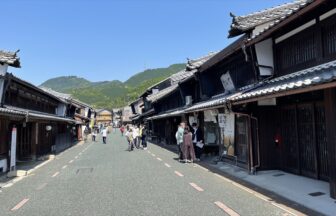Unno-juku is a post town on the old Hokkoku sub trail that connects Nakasendo trail (in the east of Nagano prefecture) and Japan sea side (in the west of Niigata prefecture). Approximately 100 historic buildings are nicely lined up along the 650 meter long street with a water way and willow trees in the middle.
The 400 year old post town is designated as an important traditional buildings preservation (Jyudenken) district by the Japanese government and is also selected as one of “Japan’s 100 roads”.
The townscape is better preserved compared to an average Jyudenken district: no hustle and bustle of too many touristic restaurants and souvenir shops and very few unmaintained vacant buildings, which allows visitors to easily be immersed into a serene yet lively atmosphere of the Edo and Meiji eras.
The area was first well developped by being designated as a post town by the Edo feudal government. 250 years later when the post town system was abondoned by the Meiji government (in the first post feudal era), the northern town continued to survive with the sericulture business, which had been established as a stable side business even during Edo period.
Access
One more advantage of Unno-juku is that it’s still conveniently located in the current transportation network – the nearest Tanaka station is just a 10 min local train ride (Shinano Railway) from Ueda, a Hokuriku shinkansen station, which is about 90 min away from Tokyo.
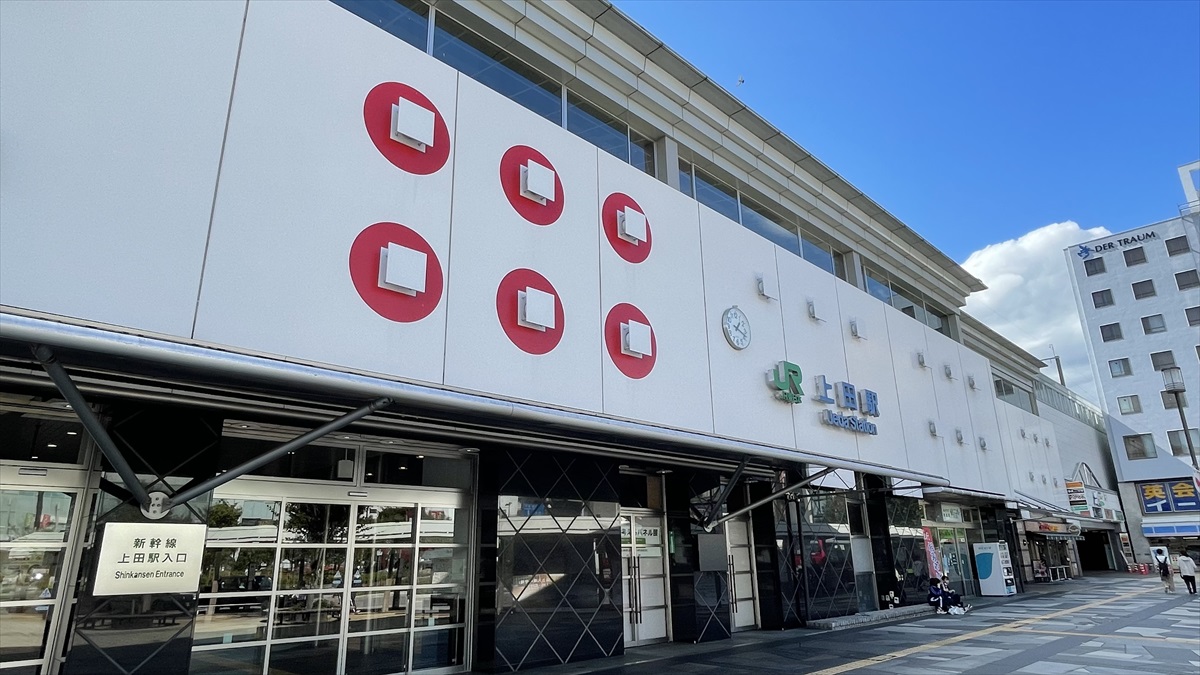
Ueda station of Hokuriku shinkansen
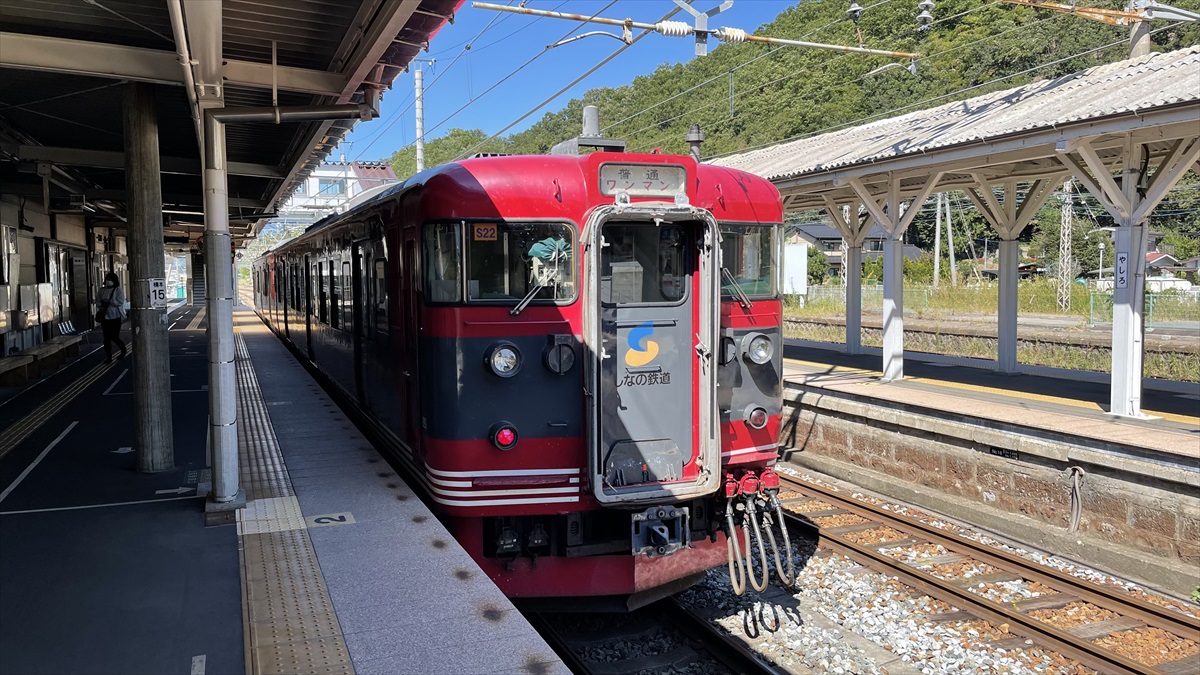
Shinano Railway train
As such, whether you are a big fan of old Japanese townscapes or not, the post town is highly recommended and logistically reasonable to visit if you have a chance to visit Kanazawa or Nagano from Tokyo via Hokuriku shinkansen or an extra day in Tokyo or Nagano.

What is even luckier is that there are several free rental bicycles (some with motors) in the tourist information of Tanaka station. You could walk the 1.6 km to the east entrance of Unno-juku but with these bikes obviously can allocate more time and energy to the town.
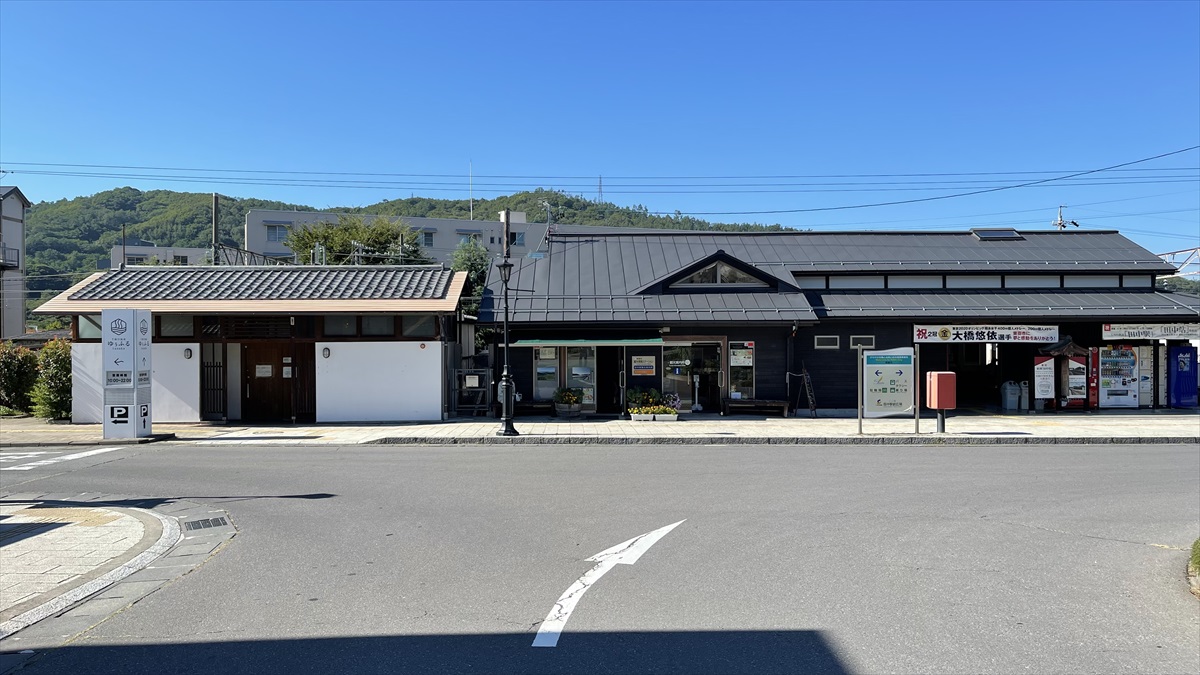
Tanaka station and Tourist Information (in the middle)
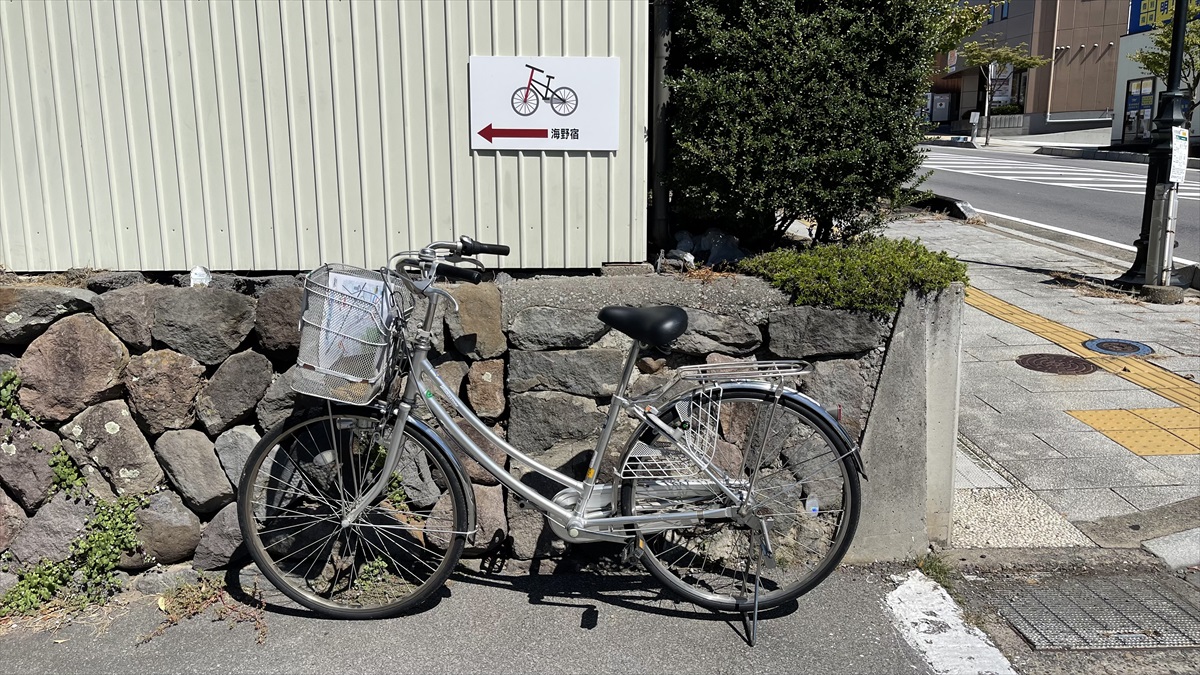
Free rental bicycle and a signage to Unno-juku
The city hall of Tomi city (where Tanaka station and Unno-juku are both located) is a stop en route of a highway express of Chikuma bus to Ueda Station from Tokyo. There is also a night bus connecting Osaka / Kyoto and Karuizawa that stops at both Ueda Station and Tomi City Hall (a 7-minute walk from Tanaka Station).
By car, it takes about 3 hours from central Tokyo to the “Tobu Yunomaru IC” via Joshinetsu Expressway – the free parking area at Unno-juku is just 9 minutes away from the interchange.
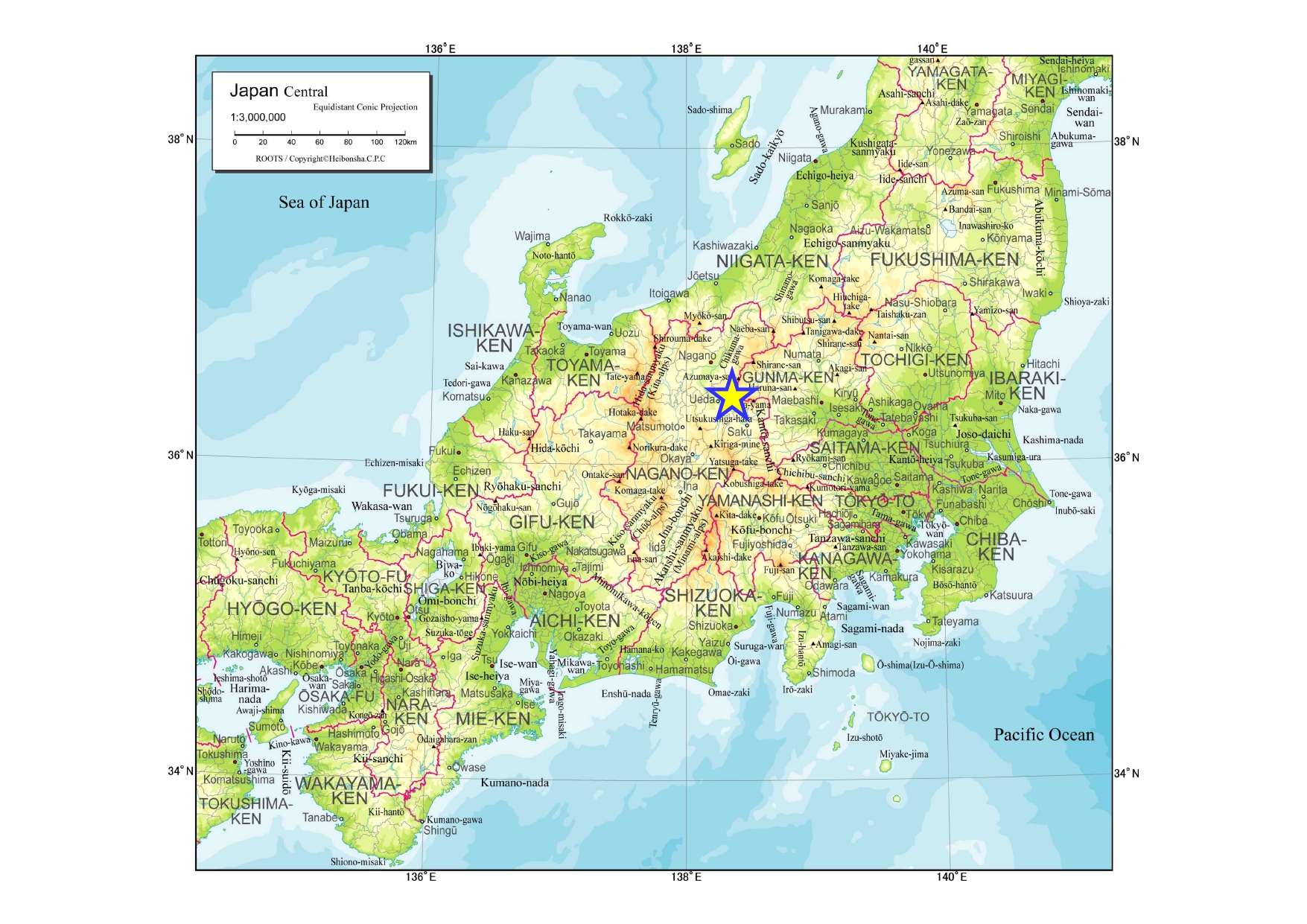
Townscape (photos)
History at a glance
Unno clan ruled the region until the late 16th
The name of “Unno-go” or Unno village was first seen 1200 years ago in a document preserved in Todaiji temple (where the Great Buddha of Nara sits). At the time, the village was on a main route to Tohoku (northern mainland Japan) region from Kyoto.
Shigeno clan consisting of three allied families including Unno emerged in the region through breeding hourses to be presented to the emperor – the cool and dry climate at the foot of Mt. Asama is suitable for horse breeding. The clan gradually gained powers to be the de facto ruler of the medieval Higashi Shinano (east part of the current Nagano prefecture).
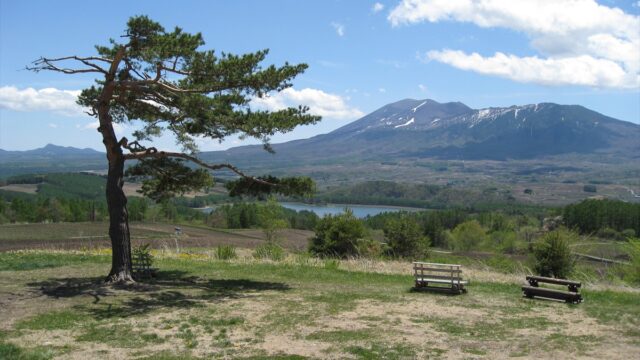
In the late 12th century, Unno family led the Shigeno group to join Genji, the later founder family of the Kamakura feudal government, to beat Heike clan, who also is the other major descendant clans of emperors and was ruling the country. After Genji defeated Heike and established the government in 1192, Unno familyexpanded their teritory and power in the region as a major servant of Kamakura government.
However, Unno clan was not able to survive Sengoku era (Warring States period) when they fought with Takeda family (based at the current Yamanashi prefecture) in 1541, which was greatly feared as one of the strongest samurai groups during the era.
Sanada family succeeded and the village flourished as a post town
Sanada Yukitaka (or Yukitsuna) as a descendant of Unno family escaped from Unno region after the deadly battle but later succedded the region by serving the opponent Takeda family.
His son Sanada Masayuki moved Unno residents to Ueda when he started building Ueda castle in 1583. The “new Unno” was created in Ueda and the former Unno was literally named Moto-Unno since then.
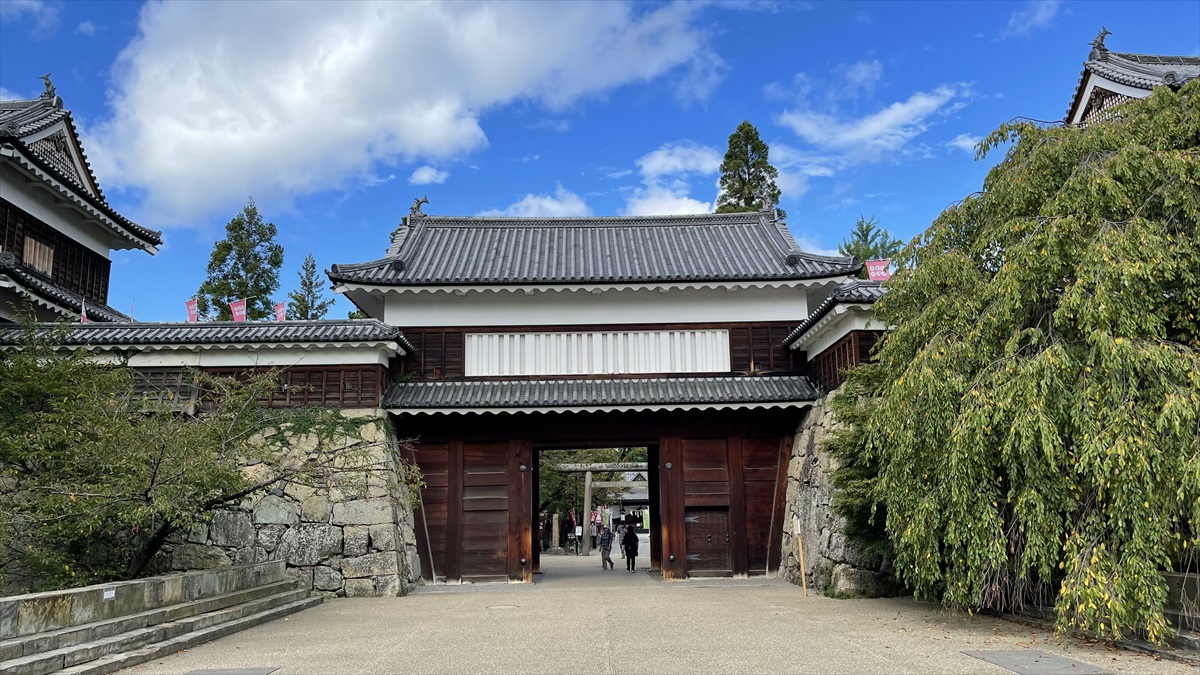
Higashi Koguchi Yagura mon gate of Ueda Castle
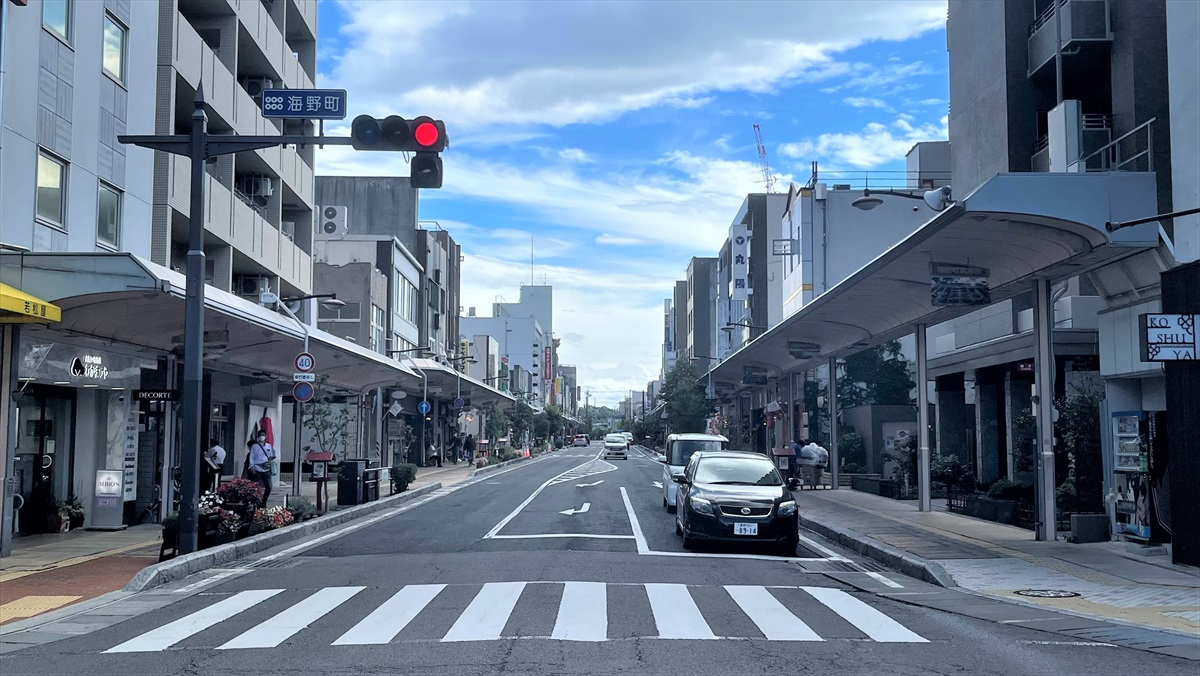
Unno town of Ueda city
Sanada Nobuyuki, the succeeding son of Masayuki, was moved to another part of the current Nagano prefecture from Unno village in 1622 and the village was designated as a post town on Hokkoku Kaido (to connect Nakasendo and Hokuriku kaido) in 1625.
The post town was flourished throughout Edo period, mainly by three major “customers” who frequently used the highway:
- Northern Daimyos (feudal loads) to annually and mandatorily commute between Edo (Tokyo) and their territories under the Sankin-Kotai system of the central government
- Those transporting gold and silver from Sado Gold Mine (in the current Sado island in Niigata prefecture), which was just found in 1601 (and lasted until 1989)
- Worshippers of Zenkoji temple in the current Nagano city
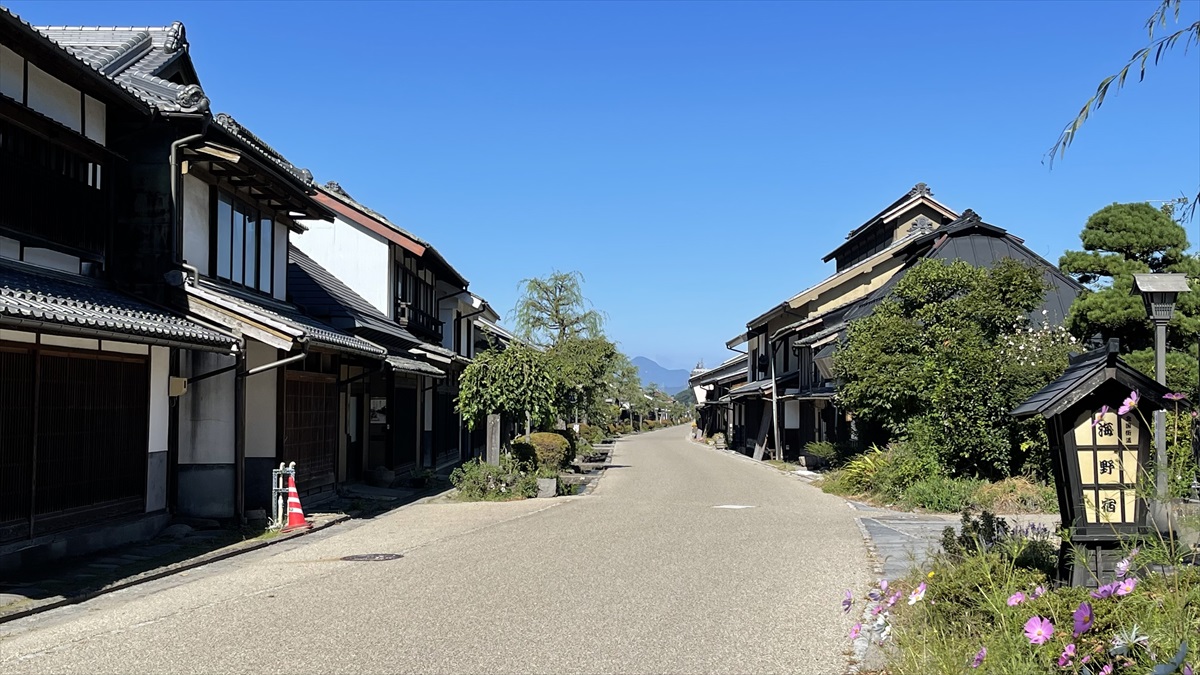
Unno-juku at the east entrance
The sericulture industry supported the village post feudal era
In addition to accommodation and shipping businesses, the Unno residents needed to add a side business to support their life during Edo period. The sericulture industry turned out to fit the village because the well-ventilated river breeze from the Chikuma riverbed raised healthy silk moths that are resistant to pests. The area became a well known production site for healthy silk worm by the end of the era.
In the Meiji era when the post station system ended, silkworm seed production became the main industry in the region, expanding sales channels to Tokyo and overseas. Sturdy zelkova-made rooms for the silkworm production and large mansion houses with gorgeous ornaments built around these days are now part of the beautiful townscape.
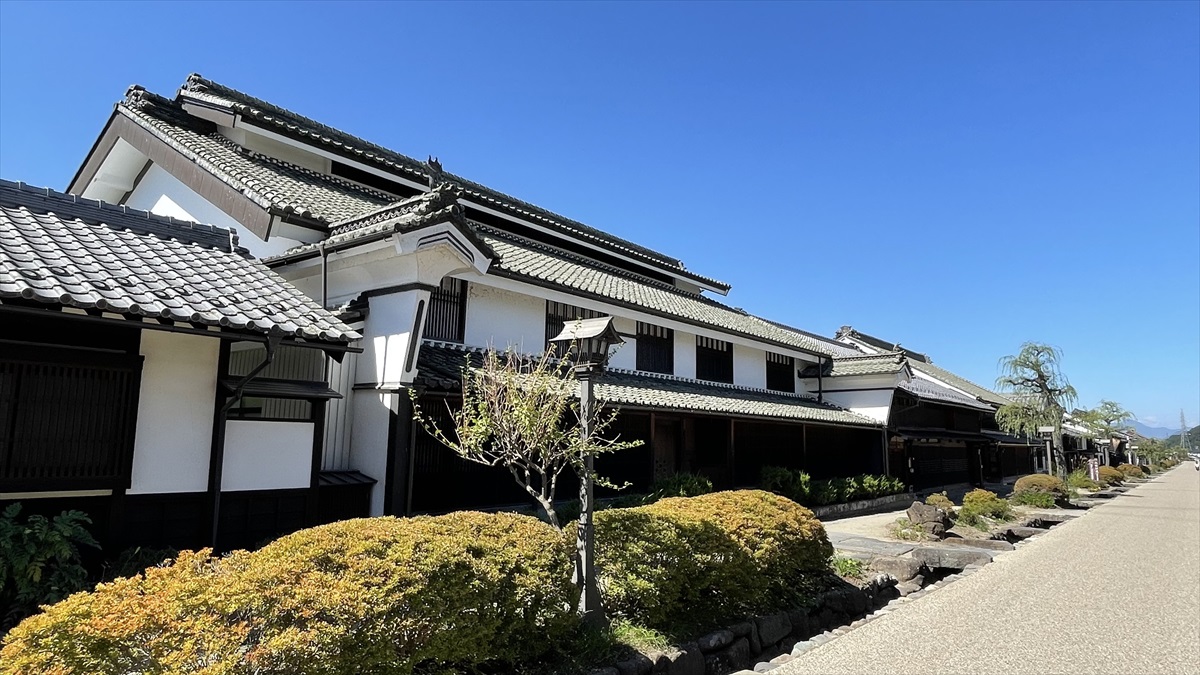
House built for sericulture business
The industry vanished after WWII and the street is out of the main routes
Raw silk exports decreased in the early 20th century due to a decline in comeptitiveness, and after the WWII, the industry almost dissapeared. In addition, the new National Route No. 18 opend away from the old trail so the center of logistics and commerce moved along the new route. Thanks to these “unhappiness”, the village and street retain the original atmosphere and scenery of traditional houses to a great extent.
The Japanese government selected the area as:
- one of the 100 best roads in Japan by the former Ministry of Construction in 1986
- one of the Important Preservation Districts for Groups of Traditional Buildings by the Agency for Cultural Affairs in1987
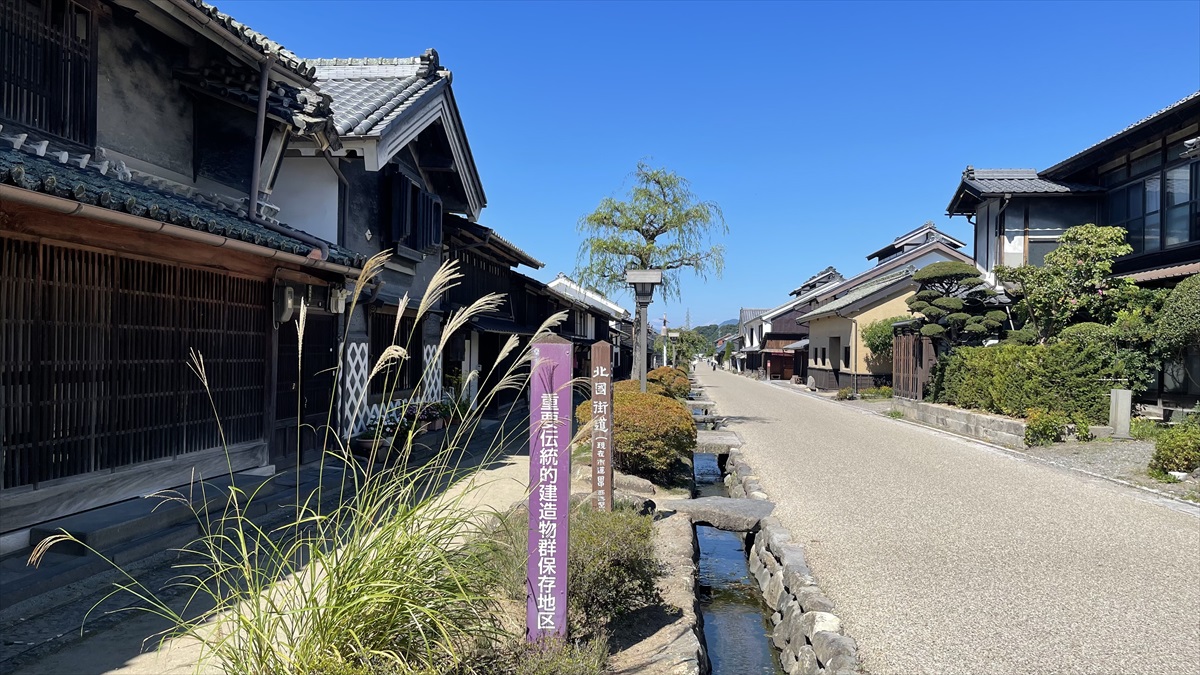
Signage for “Important Preservation Disctricts for Groups of Traditional Buildings”
Places to stop by:
Shiratori Shrine
Shiratori Shrine, which is the birthplace god of Unnojuku, was worshiped as the god of the Unno clan and the Sanada clan, and is a historical shrine auspicious for the legends of Yamato Takeru, a Japanese legendary prince of the Yamato dynasty from 2000 years ago. Click the title for detail.
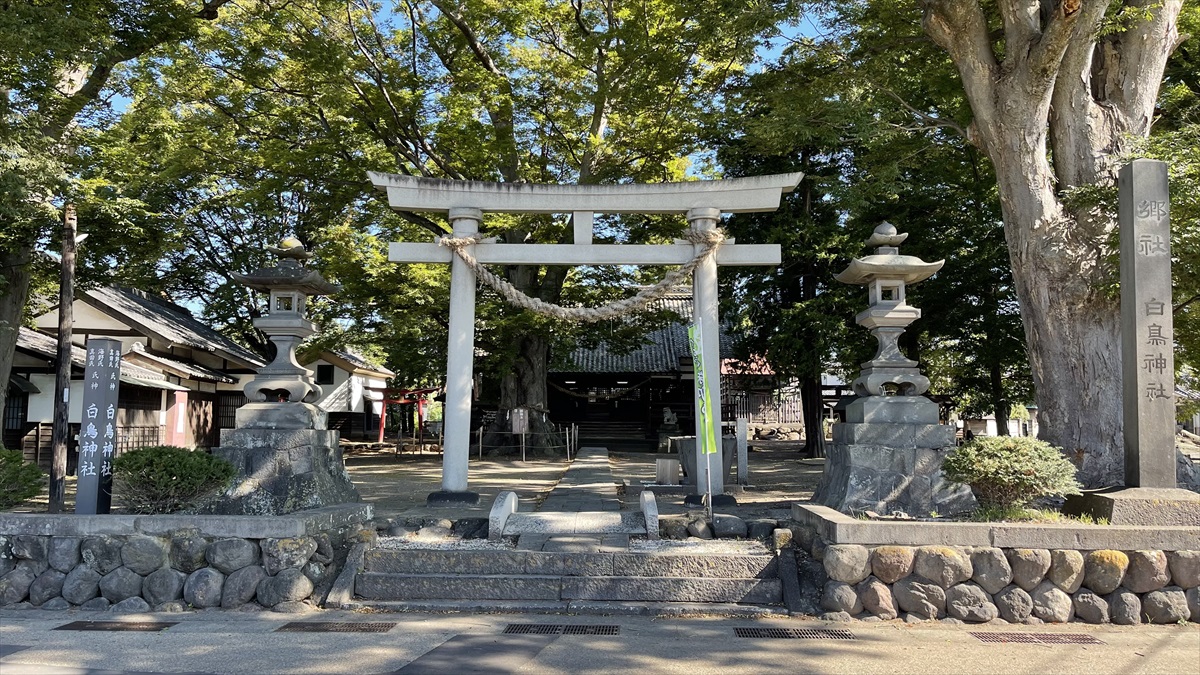
Shiratori Shrine at the east entrance of Unno-juku
Unno-juku Rekishi Minzoku Shiryokan (History and Folklore Museum)
The history of Unno-juku including Unno clan and Sanada clan as well as the post town and the sericulture business is explained in a comprehensive and concise manners. Although it is all written in Japanese, you could use a tour guide from the city.
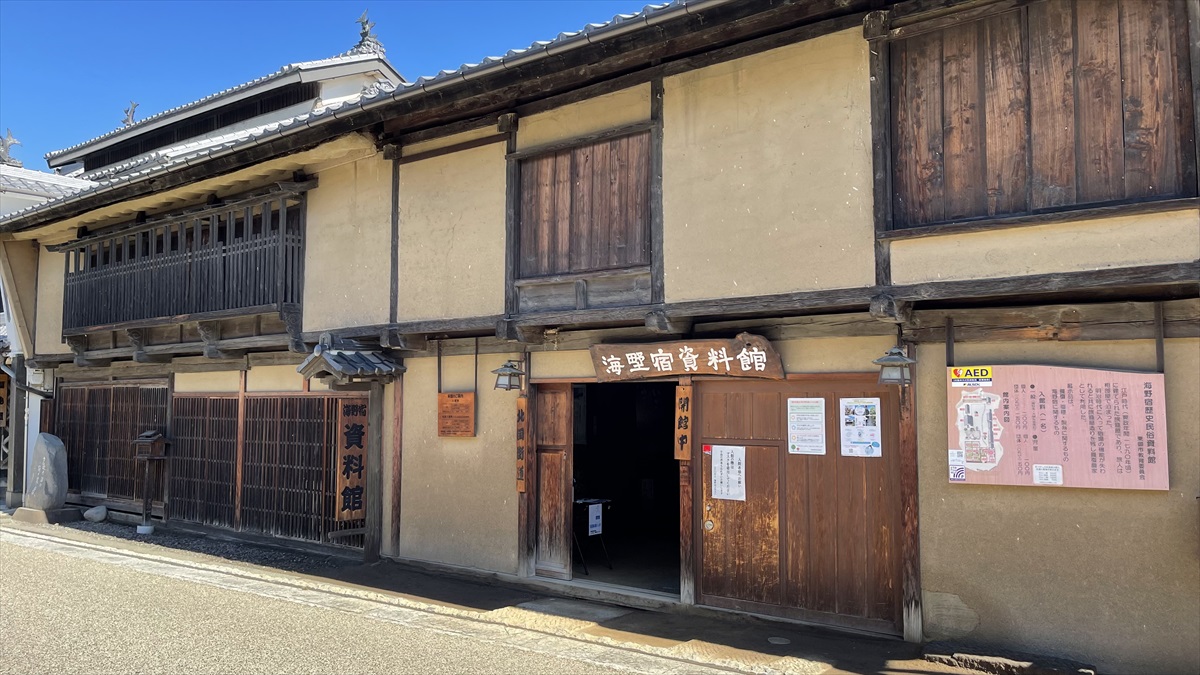
Unno-juku Rekishi Minzoku Shiryokan
(History and Folklore Museum)
Natsukashi-no-gangu Tenjikan (exhibition of old toys from around Japan)
The building was constructed in the late Edo period and recently revived as a small museum to exhibit hundreds of local toys from around the country. No language needed to enjoy the variety and quality of the toys.
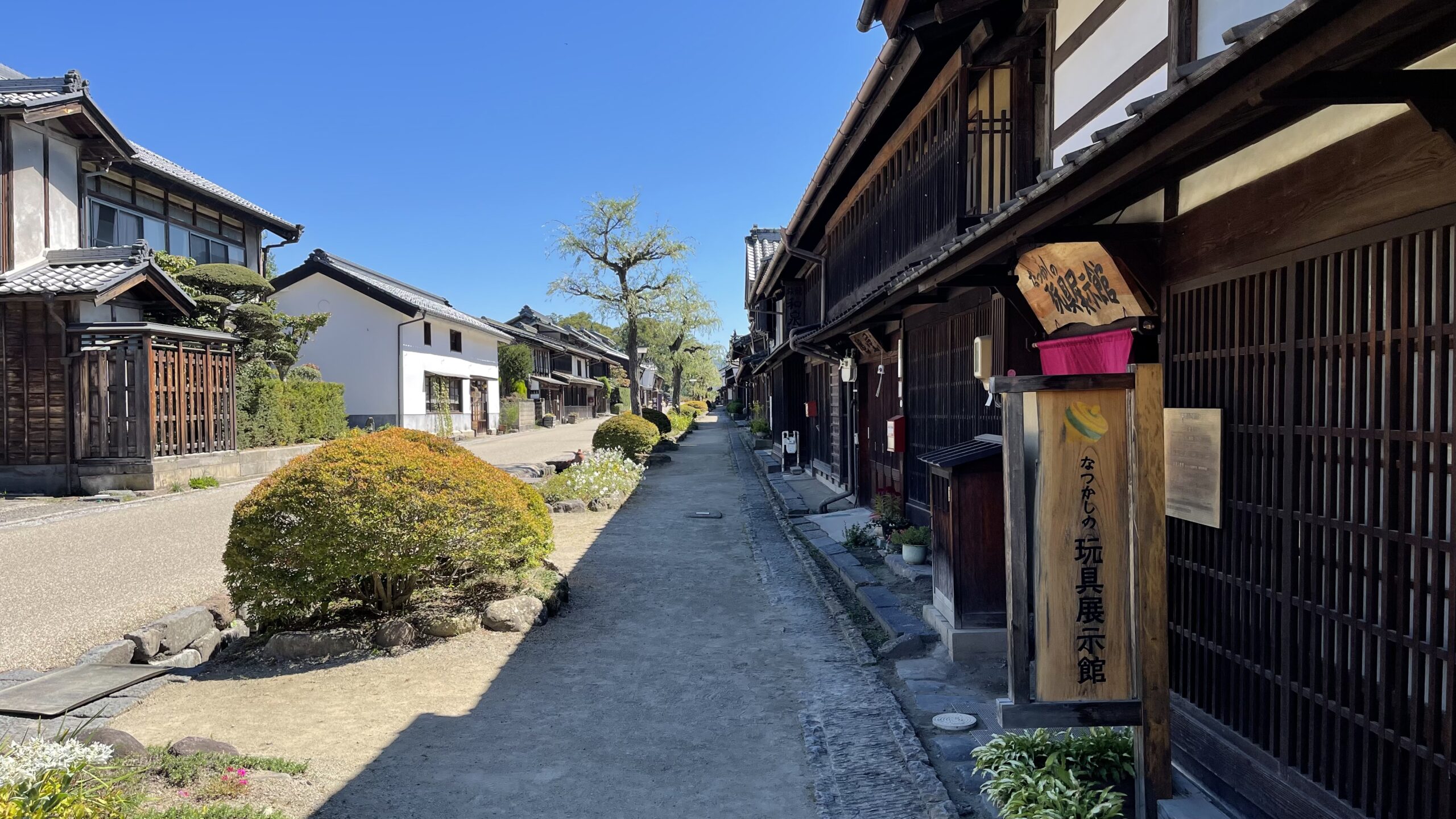
Natsukashi-no-gangu Tenjikan
(exhibition of old toys from around Japan)
Reference Information
- Tomi City Tourist Association (Unno-juku Sightseeing Guide)
- Downtown Tomi city (near Tanaka station of Shinano Railway)
- Shinano Railway
- Japanese Site (Trip Catalog/旅のカタログ)
Postscript of the Visit
- The village has been on my ToGo list for a long time but never moved up to a top priority. However, it was a very exciting half day even after visiting all three poplular post towns along Nakasendo (Magome, Tsumago, and Narai). You won’t regret!
- Not an English friendly destination yet but the level of knowledge on this article suffices to enjoy your stay
- Although there are few restaurants along the old street, you can find many in the small downtown of Tomi city, which is extended in the same side of the station’s information center, between the railway and the National Road #18
